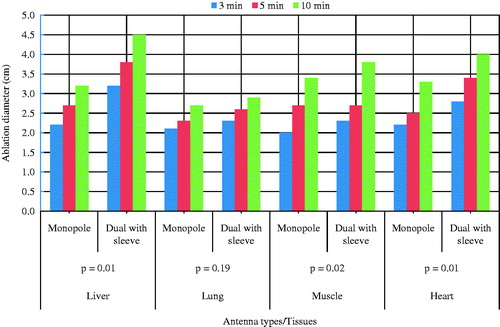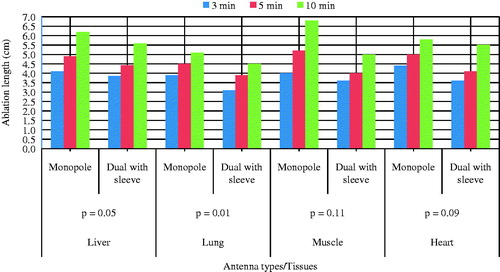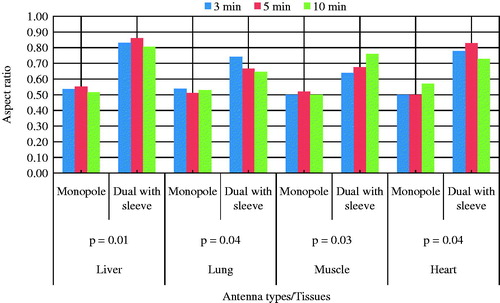Figures & data
Figure 1. Schematic diagram of (a) monopole antenna and (b) dual antenna with a floating metallic sleeve.
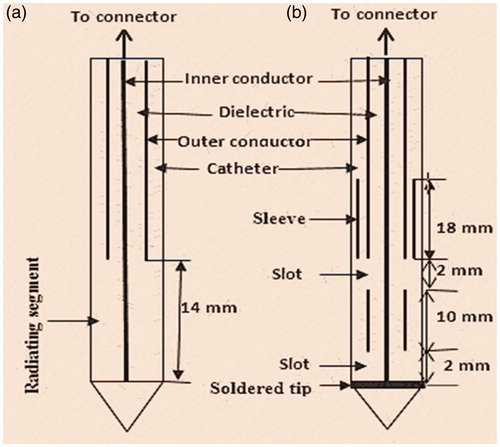
Table 1. Simulated ablation results in liver, lung, muscle and heart.
Figure 2. Necrosis pattern of ablated (a) liver, (b) lung, (c) muscle and (d) heart tissues using simulation method. (i) Sleeved antenna and (ii) monopole antenna.

Figure 3. Sample of ablation lesions created in ex vivo bovine tissues (a) liver, (b) heart, (c) lung and (d) muscle with dual antenna with sleeve (i) and monopole antenna (ii). Input power is 40 W and ablation duration is 10 min.
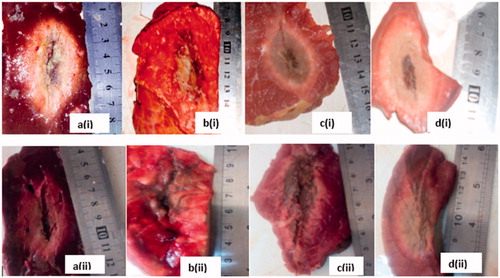
Table 2. Comparison between simulation and experimental results using 40 W for 10 min. Values of p ≤ .05 were considered to be significantly different.

